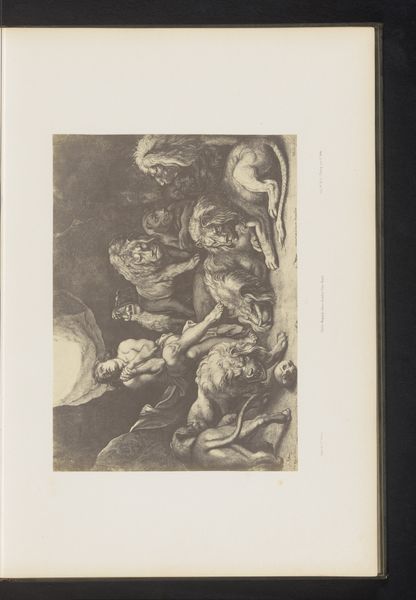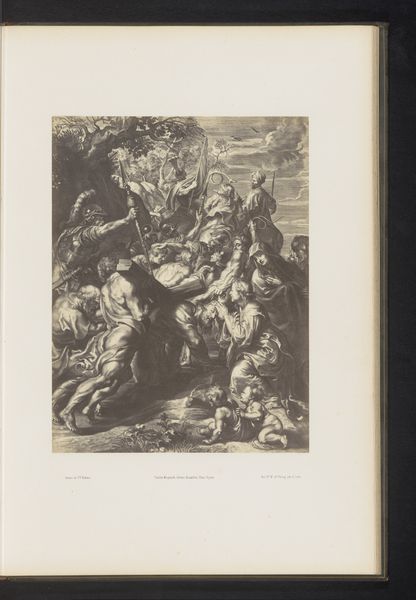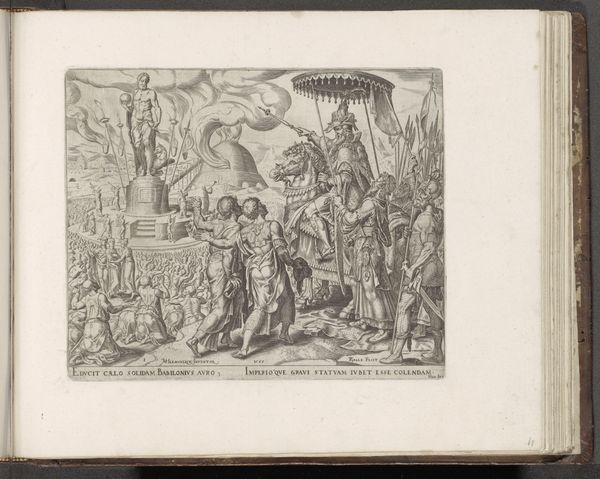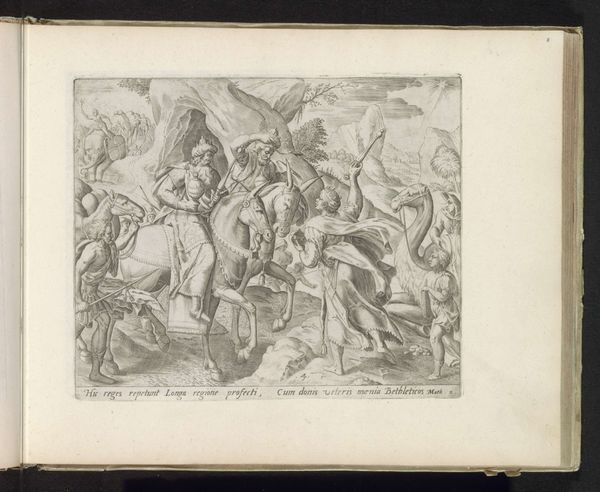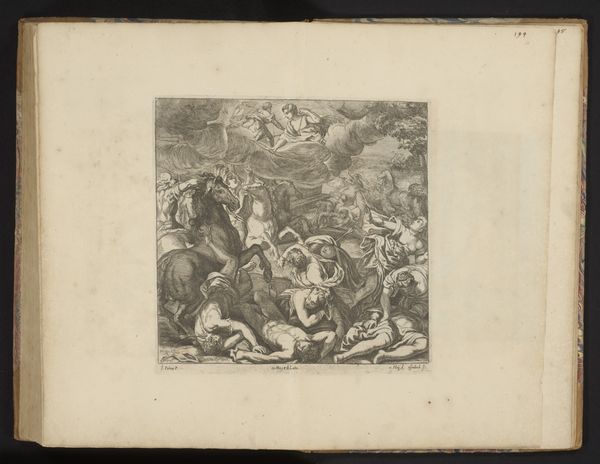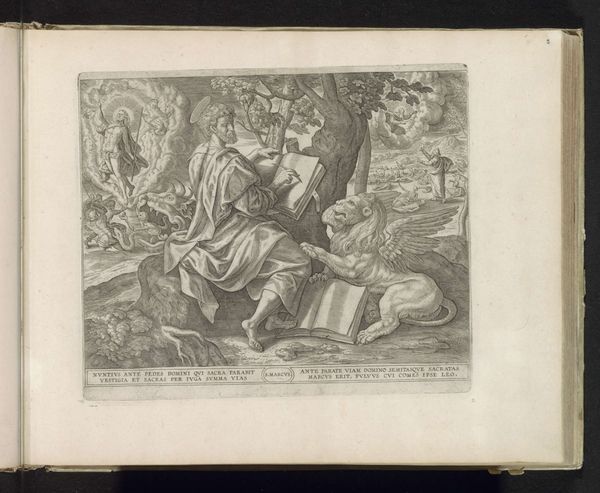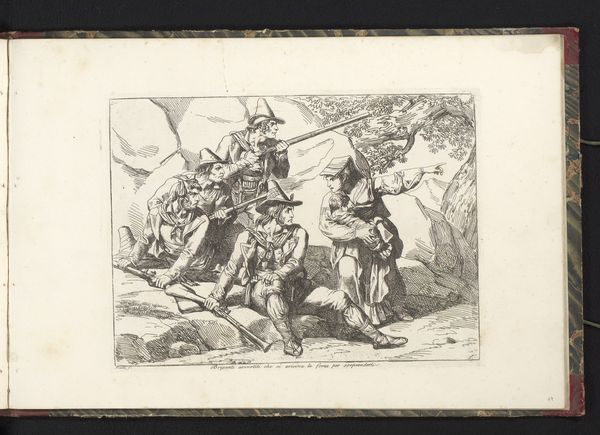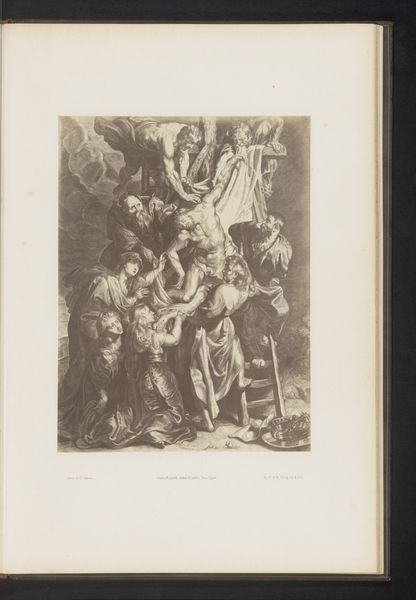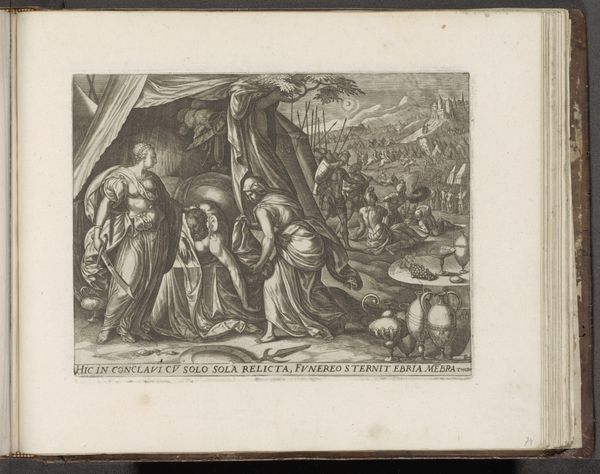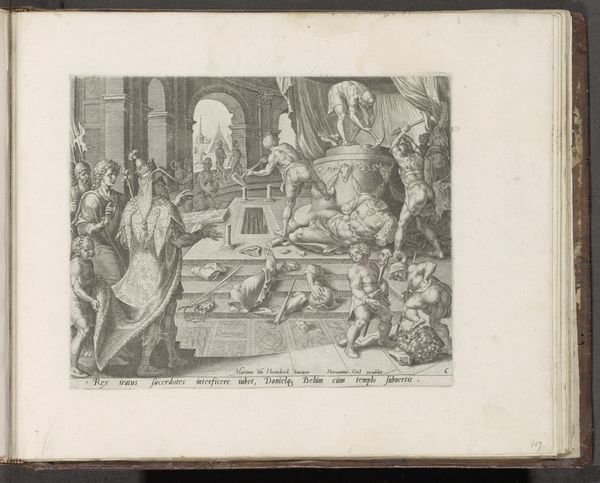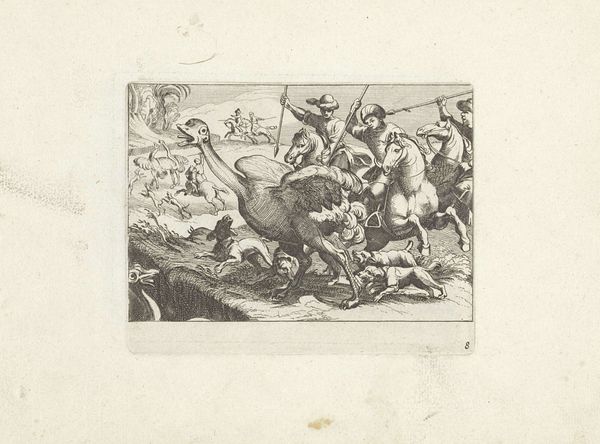
print, engraving
#
narrative-art
#
ink paper printed
# print
#
figuration
#
coloured pencil
#
line
#
watercolour illustration
#
history-painting
#
northern-renaissance
#
engraving
Dimensions: height 201 mm, width 248 mm
Copyright: Rijks Museum: Open Domain
Curator: Philips Galle’s print, "Daniël wordt uit de leeuwenkuil bevrijd," created sometime between 1565 and 1579, depicts Daniel's deliverance from the lion's den. You can see the engraving here at the Rijksmuseum. Editor: My first impression? It’s claustrophobic! The den feels so cramped, teeming with lions. The whole scene has this murky, suspenseful vibe. It makes you wonder how Daniel kept his cool, being lowered in like that. Curator: The print presents a powerful visual narrative, doesn’t it? Looking at it through a postcolonial lens, we can consider the power dynamics at play, especially the tension between Daniel, a figure representing religious defiance, and the pagan king, representing the ruling authority. Consider Daniel's unwavering faith, challenging the established power structures and their enforcement through violent means – the lions themselves. Editor: Absolutely. And there's this element of the absurd, almost. Like, here's this biblical scene rendered with such painstaking detail, all these little etched lines giving the lions individual personalities – are they bored, are they sleepy? Curator: Exactly! The fine lines are characteristic of Northern Renaissance engraving. The detail adds to the drama but also, perhaps, attempts to legitimize the narrative for contemporary audiences. Think of how printmaking enabled these stories to circulate widely, shaping religious and social perceptions during a tumultuous time. Editor: It's wild to think about. Looking at it now, there’s almost a disconnect. It feels almost… cartoonish. And yet, here's Daniel suspended, saved by what seems like a contraption involving a winch. I can't help but picture him going: "Are we there yet?" Curator: Humor helps to soften even the most difficult histories. That being said, the act of liberation from persecution, and especially when interpreted with concerns surrounding issues such as faith and cultural identity, has clear implications for contemporary socio-political discourse surrounding forced migration, social exclusion, and asylum, if we’re to engage intersectionally. Editor: Agreed. This whole thing, while depicting a specific historical/religious moment, has so many echoing chambers, right? It’s a wild, compelling scene etched in ink on paper that’s clearly triggered something bigger.
Comments
No comments
Be the first to comment and join the conversation on the ultimate creative platform.



